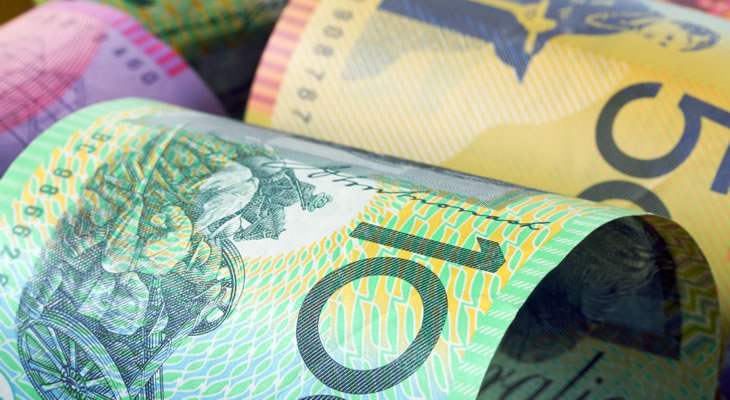- Australian Dollar strengthened despite rising Unemployment Rate – Optimism boosted by higher inflation expectations
- Bank of England surprised markets by not easing policy – Pound entered bullish run in response
- Chinese second quarter GDP bettered expectations – ‘Aussie’ made gains thanks to reduced risk aversion
- Higher US inflation forecast to boost GBP AUD exchange rate – ‘Greenback’ rally likely to weigh on Australian Dollar
Disappointing UK construction figures knocked the GBP AUD exchange rate off its stronger footing ahead of the weekend, with further volatility likely on US inflation data.
GBP AUD Exchange Rate Made Bullish Run after BoE Surprised with Lack of Rate Cut
While the Australian Unemployment Rate edged higher from 5.7% to 5.8% in June this was in line with market predictions, with signs of stronger full time employment helping to offset the bearishness of the result. Investors were also encouraged by the July Consumer Inflation Expectation figure, which improved from 3.5% to 3.7% to boost the Australian Dollar (AUD). Altogether this seemed to suggest greater robustness within the domestic economy, in spite of persistent concerns over the outcome of the recent federal election.
However, this didn’t prevent the Pound to Australian Dollar (GBP AUD) exchange rate from returning to an uptrend. Markets were generally reassured by the news that Philip Hammond had been appointed as the new Chancellor of the Exchequer, with many investors reassured by Hammond’s level of financial experience. As the new Chancellor was also quick to rule out the possibility of an emergency budget as a result of the referendum outcome this saw the Pound (GBP) boosted once again.
There was further cause for confidence in Sterling after the Bank of England (BoE) surprised investors by not cutting interest rates at its first post-Brexit policy meeting. Only one member of the Monetary Policy Committee (MPC) ultimately voted to lower rates, in spite of dovish signals from the BoE in the wake of the referendum. This saw the GBP AUD exchange rate rally strongly, climbing to a weekly high of 1.7620 as traders piled back into the Pound. Even so, the door was left open for the MPC to ease in August, with the accompanying minutes noting:
‘The MPC is committed to taking whatever action is needed to support growth and to return inflation to the target over an appropriate horizon. To that end, most members of the Committee expect monetary policy to be loosened in August. The Committee discussed various easing options and combinations thereof. The exact extent of any additional stimulus measures will be based on the Committee’s updated forecast, and their composition will take account of any interactions with the financial system.’
Weaker UK Construction Data Weakened Pound (GBP) Gains
Demand for the Pound faltered somewhat on Friday morning, with the initial boost from the BoE decision beginning to wear off. Sentiment also weakened in response to the UK Construction Output figures for May, with both the monthly and yearly measures demonstrating fresh contraction. This was a rather worrying signal, given that the sector is thought to have been badly hit by uncertainty following the Brexit vote. As a result, worries over the outlook of the domestic economy were stirred afresh, adding renewed downside pressure to the GBP AUD exchange rate.
Risk appetite improved further ahead of the weekend on the back of the latest batch of Chinese ecostats. Market jitters eased when the second quarter GDP was found to have bettered expectations, holding steady at growth of 6.7% on the year rather than the 6.6% that had been forecast. Confidence was also encouraged by stronger Industrial Production and Retail Sales figures, which seemed to indicate that the world’s second largest economy is not overly suffering from slowdown pressures at present. As Elwin de Groot, Senior Eurozone Strategist at Rabobank, noted:
‘Altogether this boiled down to a 6.7% y-o-y growth rate, unchanged from Q1 and bang in line with the official growth target. Despite all the caveats, for now these numbers may soothe concerns in the market that the China’s soft landing is turning into a hard one.’
GBP AUD Exchange Rate Forecast: Stronger US Inflation Predicted to Dent ‘Aussie’
The appeal of the antipodean currency may weaken on Friday afternoon in response to a number of high-impact US data releases. Markets will be paying close attention to the Consumer Price Index and Advance Retail Sales figures for June, with robust results likely to drive up the ‘Greenback’ (USD) and weigh heavily on the commodity-correlated ‘Aussie’. Forecasts suggest that inflationary pressure in the US ticked higher in June, something which could increase the odds of the Federal Reserve opting to raise interest rates in the near future.
Confidence in the Pound is expected to weaken further in the coming days, with little to deter investors from engaging in a fresh round of profit taking. While the pace of political developments in the UK has naturally slowed now that Theresa May has appointed her cabinet, any commentary on the issue of Brexit still has the capacity to move markets. Sterling weakness should also be expected ahead of Tuesday’s Consumer Price Index report, with weaker domestic data likely to severely dent the appeal of the Pound.
Current GBP, AUD Exchange Rate
At the time of writing, the Pound to Australian Dollar (GBP AUD) exchange rate was slumped in the region of 1.7469, while the Australian Dollar to Pound (AUD GBP) pairing was making gains around 0.5723.


Comments are closed.